Amr Alfayoumy

Cairo, Egypt
+201026286004
amr.alfayoumy@outlook.com
Resume | LinkedIn | GitHub
I am a data scientist who enjoys drawing insights from data.
I graduated summa cum laude with a Bachelor's Degree in Computer Engineering (CGPA of 3.92) from Nile University, and have completed various data science and AI courses via Coursera, Udacity, and others.
I consider myself a passionate, hard-working, and determined person. I am also a fast-learner with a creative attitude to problem-solving.
My ultimate goal in life is to use AI to make the world a better place for all humanity.
Portfolio
Deep Learning · Machine Learning · Data Visualization · Courses
Deep Learning
Web App for Real-time Human Activity Recognition Using Deep Learning
Key Skills: Data Analysis · Data Science · Artificial Intelligence (AI) · Deep Learning · Feature Engineering · Research Skills · Python (Programming Language) · Pandas · NumPy · SciPy · Matplotlib · Keras · TensorFlow · Flask · Web Applications · Firebase · Cloud Firestore · Convolutional Neural Networks (CNN) · Long Short-term Memory (LSTM) · Google Cloud Platform (GCP) · NoSQL · JSON Web Tokens (JWT) · OAuth · RESTful APIs · Git · Agile Methodology
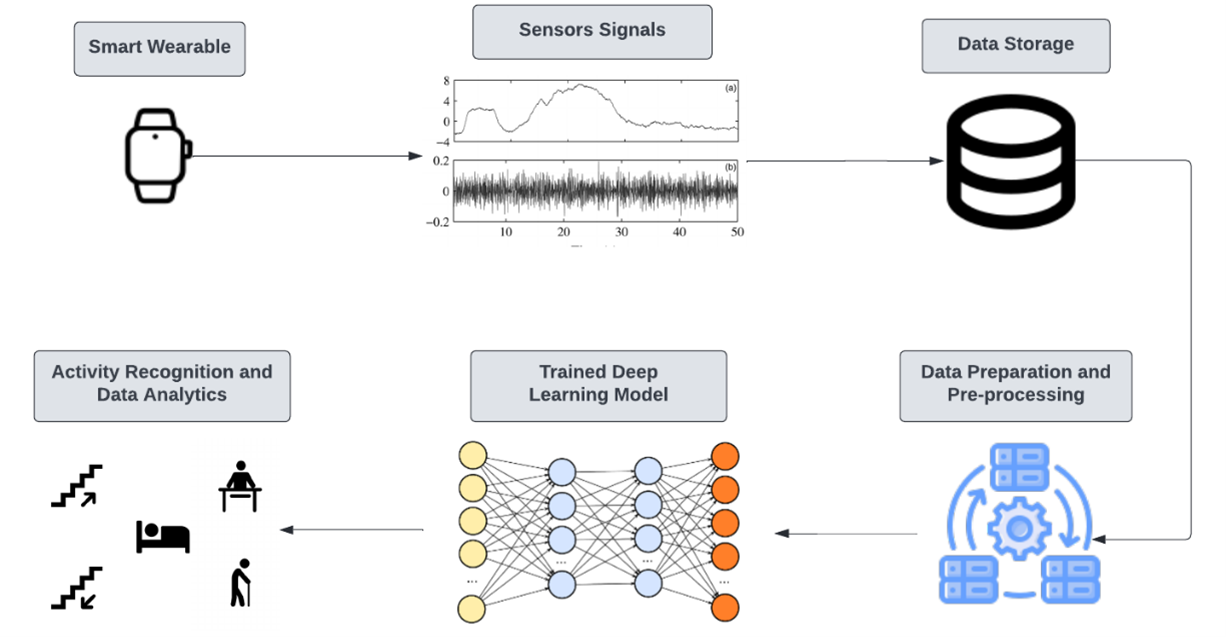
Tasks:
- Identified and selected appropriate sensors (e.g., accelerometers, gyroscopes) that capture relevant data for activity recognition.
- Collected real-time sensor data corresponding to various human activities.
- Pre-processed the sensor data to ensure consistency and remove noise.
- Designed and implemented multiple deep learning models suitable for processing sequential sensor data including Convolution Neural Networks (CNNs), Recurrent Neural Networks (RNNs). Long Short-Term Memory (LSTM) networks, and CNN-LSTM networks.
- Trained the models on the labeled sensor data for real-time activity recognition.
- Optimized the model for accuracy, efficiency, and low latency to enable real-time operation.
- Tested and evaluated the model's performance in real-time scenarios.
- Developed a web app to monitor human activities and display the models prediction results in real-time in a user-friendly interface.
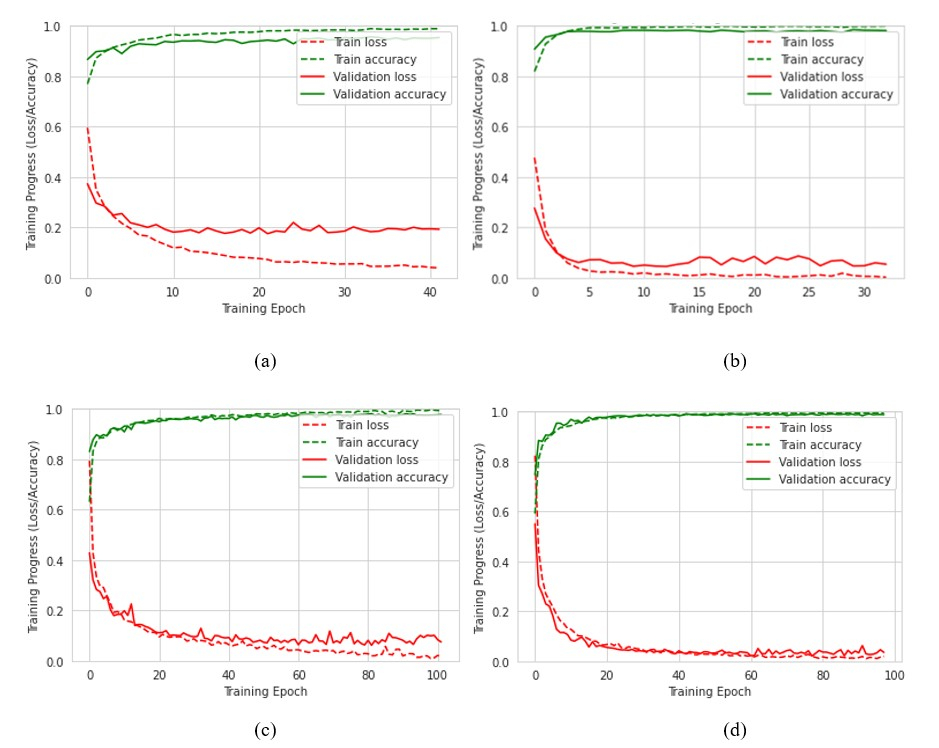
Accuracy and loss curves of (a) ANN, (b) CNN, (c) LSTM, (d) CNN-LSTM
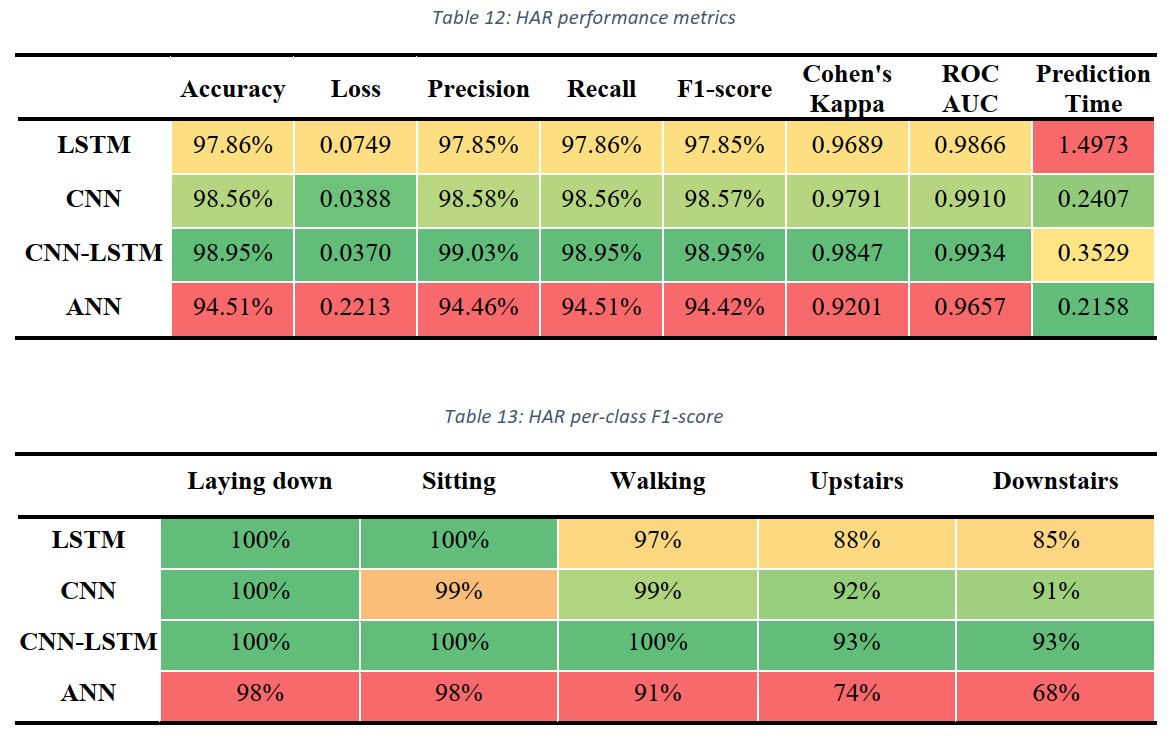
HAR models' performance metrics
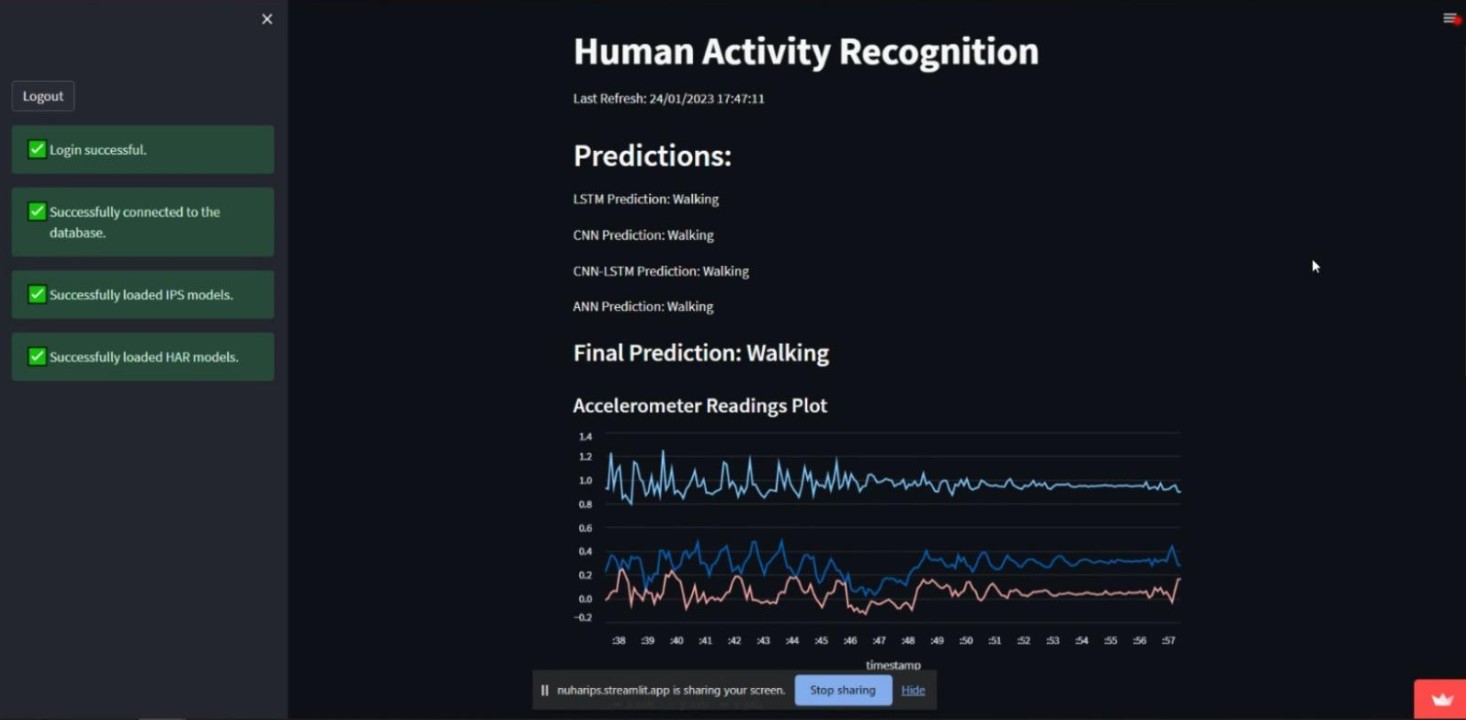
Web app dashboard showing the prediction of each HAR model
Real-time Detection of Cyberattacks on Secure Water Treatment Plants (SWaT) [Work in Progress]
Key Skills: Data Science · Artificial Intelligence (AI) · Data Analysis · Deep Learning · Internet of Things (IoT) · Python (Programming Language) · Pandas · Anaconda · Seaborn · SciPy · NumPy · Matplotlib · Keras · TensorFlow · Binary Classification · Anomaly Detection · Multi-label Classification · Multi-step Forecasting · Multivariate Time Series Forecasting · Convolutional Neural Networks (CNN) · Long Short-term Memory (LSTM) · Gated Recurrent Units (GRUs) · Bidirectional Recurrent Neural Networks (Bi-RNNs)
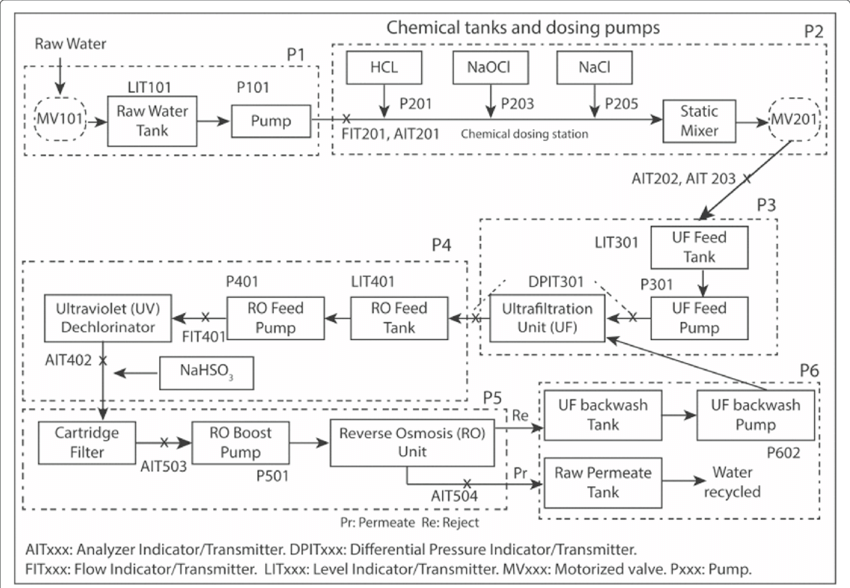
Tasks:
- Identified the relevant sensors and actuators within the secure treatment plant, understanding the data they generate (e.g., flow rates, chemical levels, actuator status, etc.).
- Analyzed historical sensor and actuator data alongside information on normal operational states and any past attacks.
- Pre-processed the data to handle missing values, and outliers, and ensure data quality and integrity.
- Developed deep learning models to classify and forecast sensor and actuator data in real time.
- Trained the models to identify normal operational patterns and potential deviations that could indicate a cyberattack as well as identify the exact time of the cyberattack and attack points.
- Optimized the deep learning models by fine-tuning hyperparameters, adjusting architectures, and implementing advanced techniques such as regularization and dropout to improve performance and generalization.
- Evaluated the models' ability to detect anomalies and predict potential cyberattacks on the system.

Confusion matrices of the Normal vs. Attack classification task of (a) LSTM, (b) CNN, (c) CNN-LSTM models
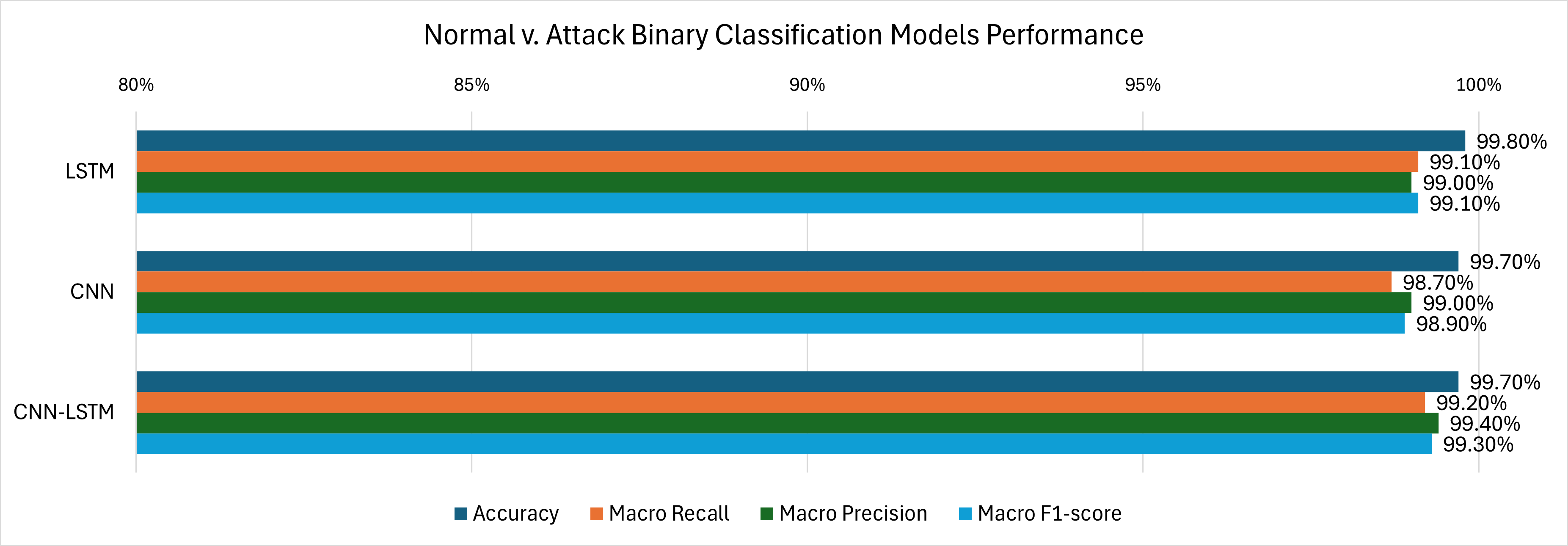
Models' performance metrics on the Normal vs. Attack classification task
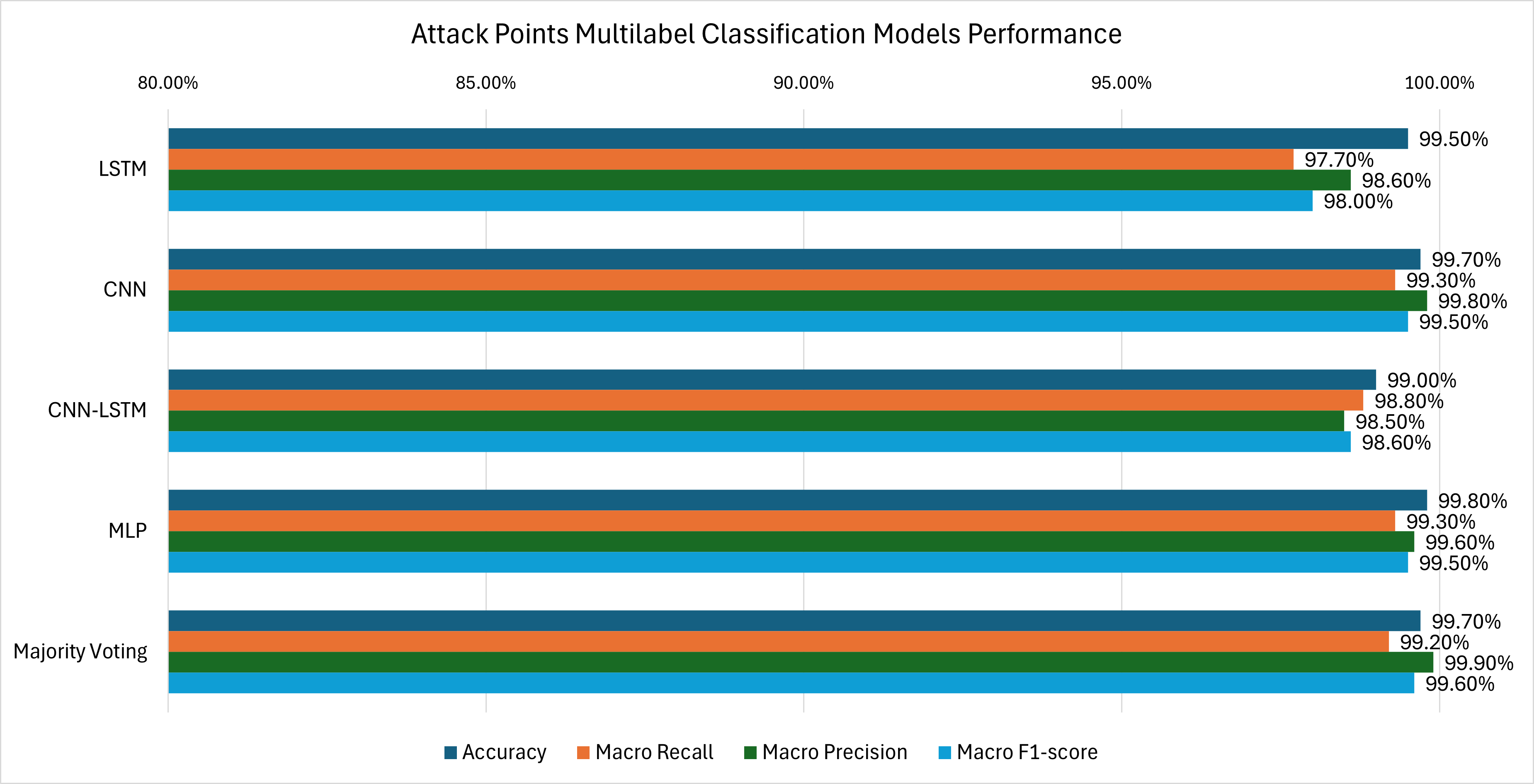
Models' performance metrics on the Attack Points multilabel classification task
Driving Assistant (Copilot) Android App for Street Sign Detection and Identification in Real-time
Key Skills: Android · Android Development · Android Studio · Android SDK · Kotlin · Data Science · Data Analysis · Convolutional Neural Networks (CNN) · Pandas · NumPy · Matplotlib · Python (Programming Language) · Deep Learning · Data Classification · OpenCV · TensorFlow Lite · Image Processing · Mobile Development · UI/UX Design · Unit Testing · Continuous Integration and Deployment (CI/CD)
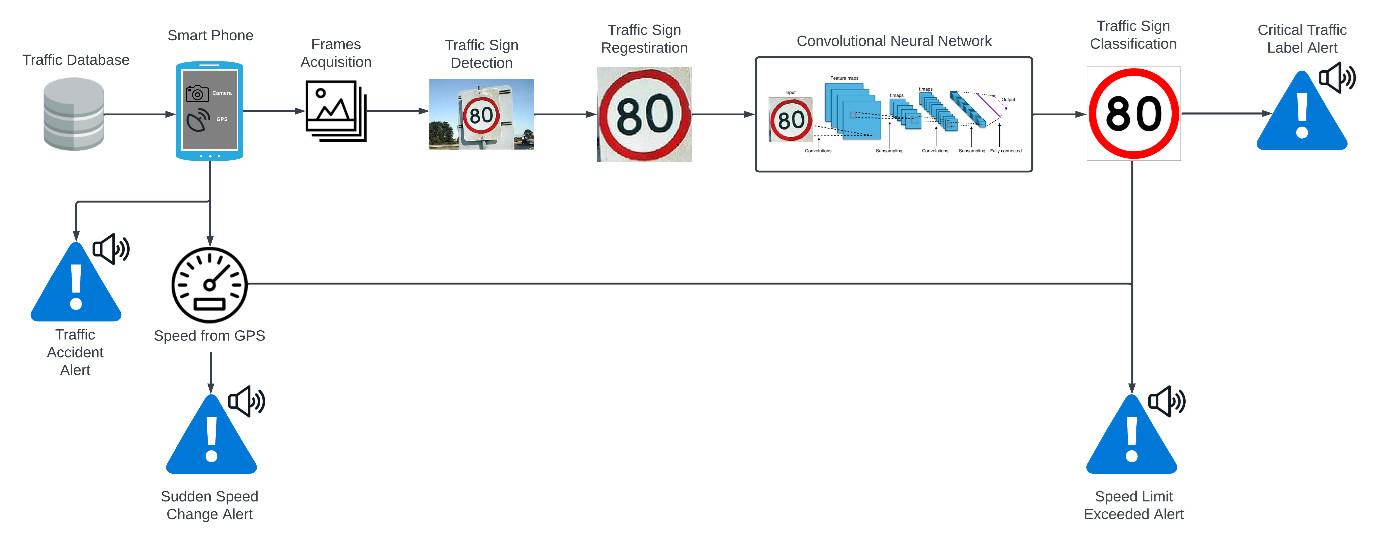

Tasks:
- Researched and selected appropriate deep learning models focusing on Convolutional Neural Networks (CNNs) pre-trained for object detection tasks like YOLO.
- Analyzed a large dataset of street sign images encompassing various types, shapes, and environmental conditions (lighting variations, occlusions).
- Pre-processed the image data for training the deep learning model, including techniques such as image resizing, normalization, and data augmentation.
- Adapted the chosen deep learning model for street sign detection and classification by fine-tuning it on the prepared street sign image dataset.
- Integrated the deep learning model with an Android application framework for real-time processing.
- Developed functionalities within the app to capture live video from the smartphone camera and to calculate the car’s speed using GPS.
- Designed an interface to display real-time detections and classifications of street signs on the phone screen with audio alerts for critical signs (stop signs, speed limit signs).
- Optimized the app for performance on mobile devices, balancing accuracy with computational efficiency and battery usage.
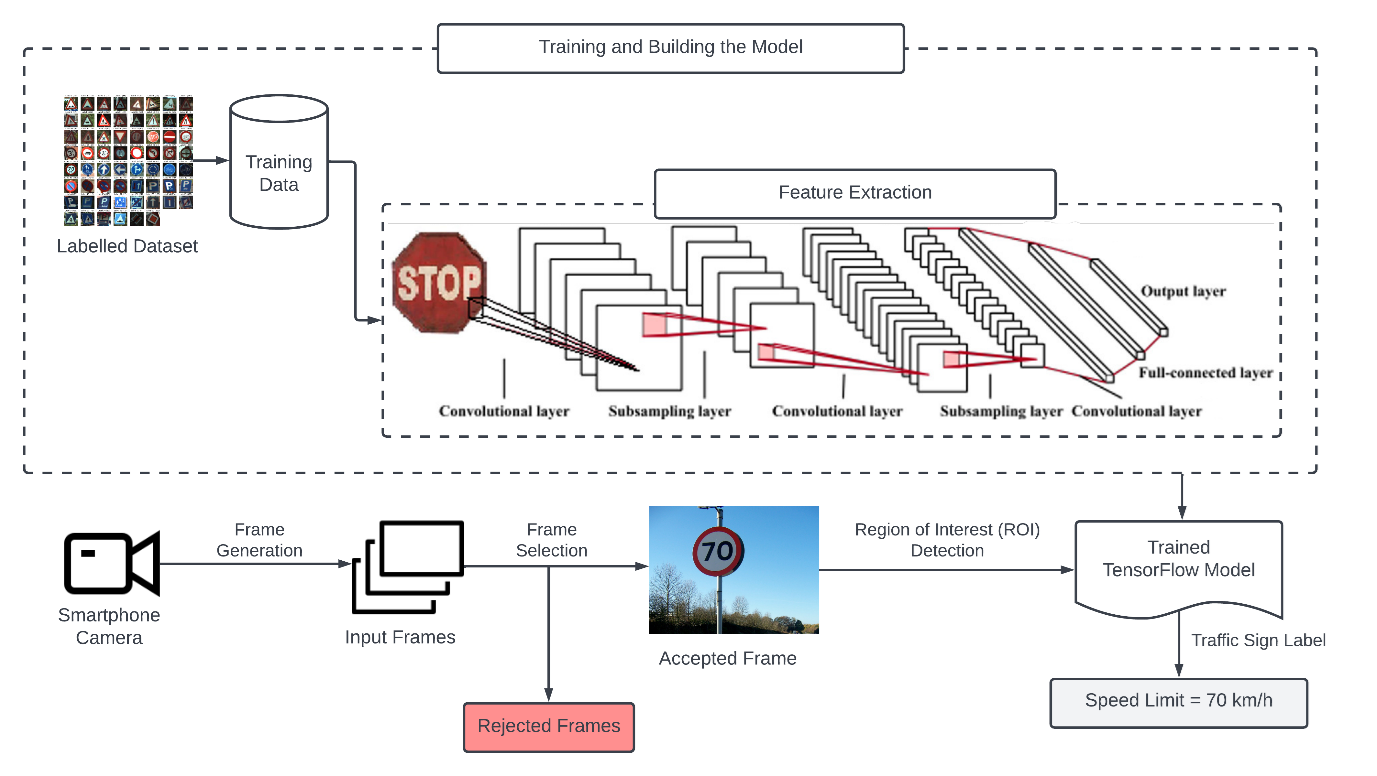
Proposed design
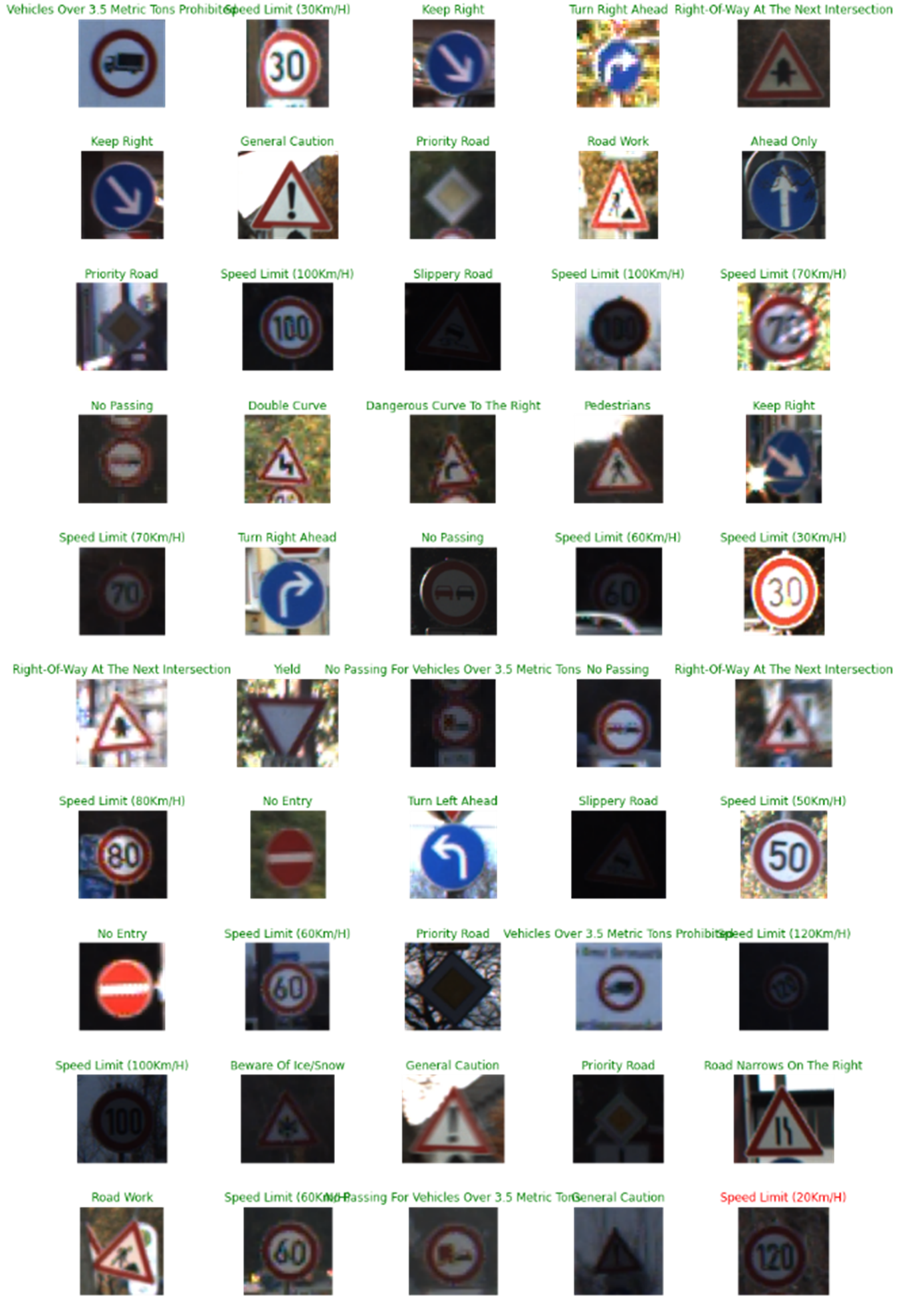
Model predicted labels vs. true labels for an eval batch.
Green indicates correct predictions whereas red indicates wrong predictions.
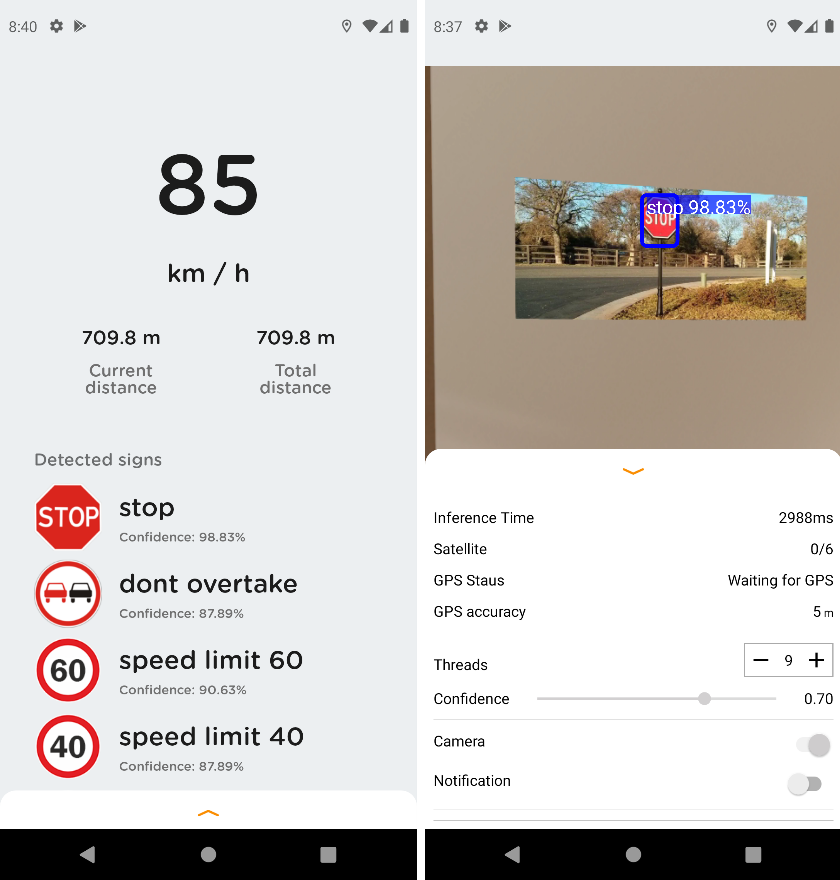
The developed app under testing through AVM
Machine Learning
Supervised Algorithms for the Detection of COVID-19 from Chest CT & X-ray Scan Images
Key Skills: Machine Learning · Feature Engineering · Feature Extraction · Image Processing · Digital Image Processing · Data Classification · Scikit-Learn · Matplotlib · SciPy · NumPy · Pandas · OpenCV · Python (Programming Language) · Web Applications · Hyperparameter Tuning · Cross-validation

Develop a supervised machine learning model to automate the analysis of X-ray and CT scan images for faster and more efficient detection of COVID-19.
Tasks:
- Collected and pre-processed a large dataset of X-ray and CT scans, including both COVID-19 positive and negative cases.
- Implemented image processing techniques to extract relevant features (HSV Histograms, Haralick Texture Features, Threshold Adjacency Statistics, Raw Pixel Intensities, etc.) from the X-ray and CT scan images.
- Employed supervised machine learning algorithms, focusing on algorithms effective for classification tasks such as K-Nearest Neighbors (kNN), Support Vector Machines (SVMs), Random Forests, etc.
- Trained and validated the model on the prepared dataset, optimizing for accuracy in differentiating between COVID-19 and other respiratory illnesses.
- Evaluated the model's performance metrics such as sensitivity, specificity, and accuracy.
- Documented the research process, highlighting the chosen feature extraction techniques, machine learning algorithms used, training parameters, and achieved performance.

Confusion matrix of the Voting Classifier on the combined features of the CT model (left) and X-ray model (right).

Testing accuracies of the classifying algorithms on the CT dataset

Testing accuracies of the classifying algorithms on the X-ray dataset

The proposed model tested through the web app on a CT scan image of a COVID-19 positive case (above) and a CT scan image of a COVID-19 negative case (below).
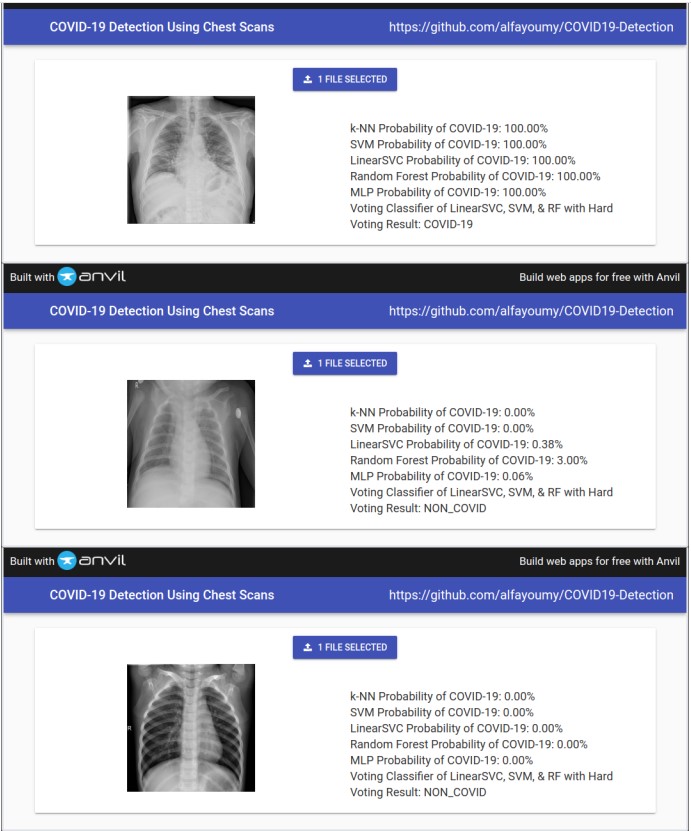 The proposed model tested through the web app on a CT scan image of a COVID-19 positive case (above), a CT scan image of a viral pneumonia case (middle), and a CT scan image of a normal lung (below).
The proposed model tested through the web app on a CT scan image of a COVID-19 positive case (above), a CT scan image of a viral pneumonia case (middle), and a CT scan image of a normal lung (below).
Real-time Indoor Positioning System using Machine Learning
Key Skills: Machine Learning · Feature Engineering · Scikit-Learn · Data Science · Data Analysis · Artificial Intelligence (AI) · Communication Protocols · Signal Processing · Internet of Things (IoT) · Python (Programming Language) · NumPy · Pandas (Software) · Matplotlib · Data Classification · Flask · Web Applications · Firebase · Cloud Firestore · Google Cloud Platform (GCP) · Cross-validation · Agile Methodology
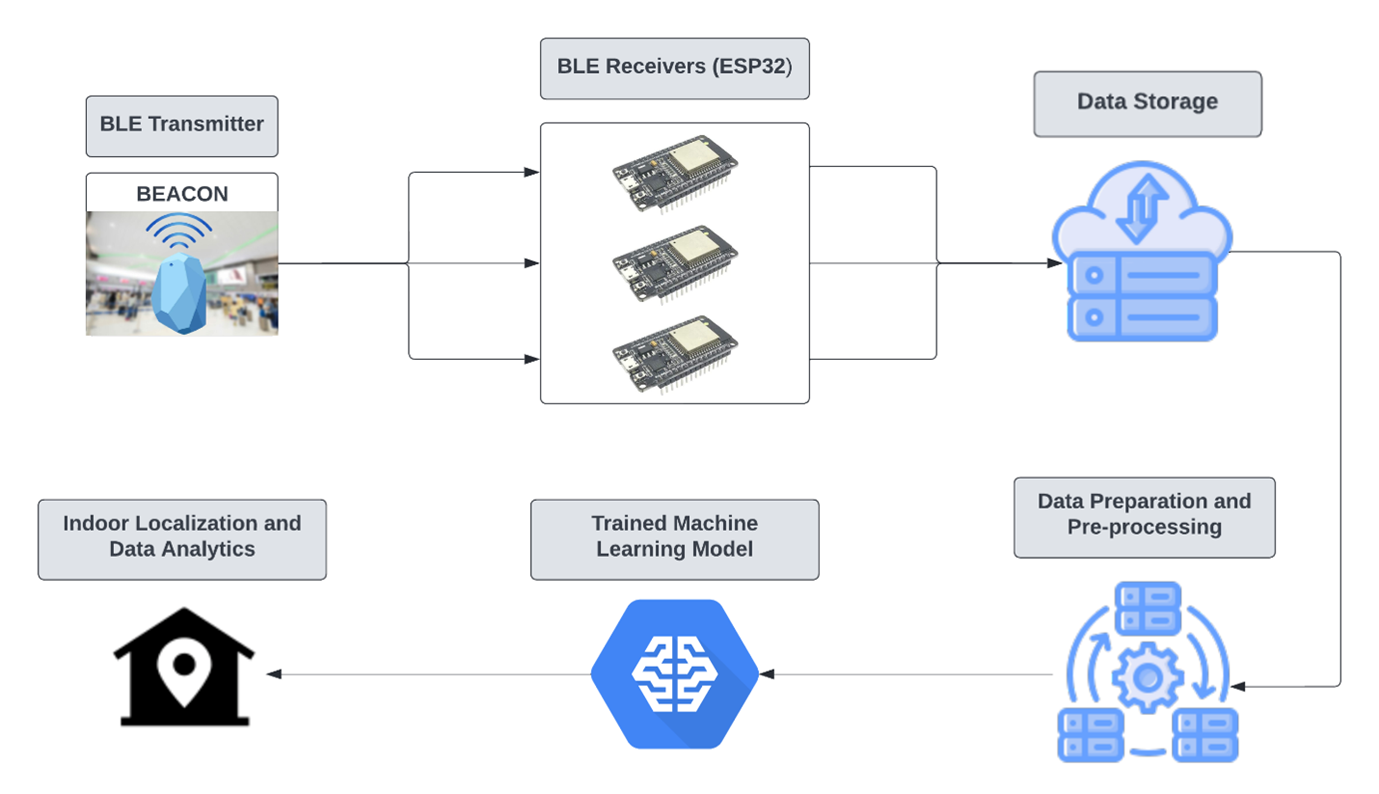
Tasks:
- Investigated different indoor positioning technologies, and selected Bluetooth Low Energy (BLE) beacons for this application.
- Collected data points (received signal strength indicator (RSSI) values) from the chosen technology within the designated indoor space.
- Employed various machine learning algorithms such k-Nearest Neighbors (kNN), Support Vector Machines (SVMs), Random Forest, Naive Bayes, and others to learn the relationship between signal data and location.
- Trained several models to predict a user's location within the designated space based on real-time BLE RSSI readings.
- Evaluated the positioning system's accuracy and latency for real-time applications.
- Optimized the models for efficient resource utilization and real-time performance.
- Integrated the Indoor Positioning System with the Human Activity Recognition system for the application of patient monitoring in a care facility for the elderly.
- Configured the system to detect inconsistent events (e.g., patient laying down in the bathroom) and alarming activities (e.g., location and activity have not changed for a period of time) and send alerts when an event is detected.
- Documented the research process and presented the findings to technical and non-technical audiences.
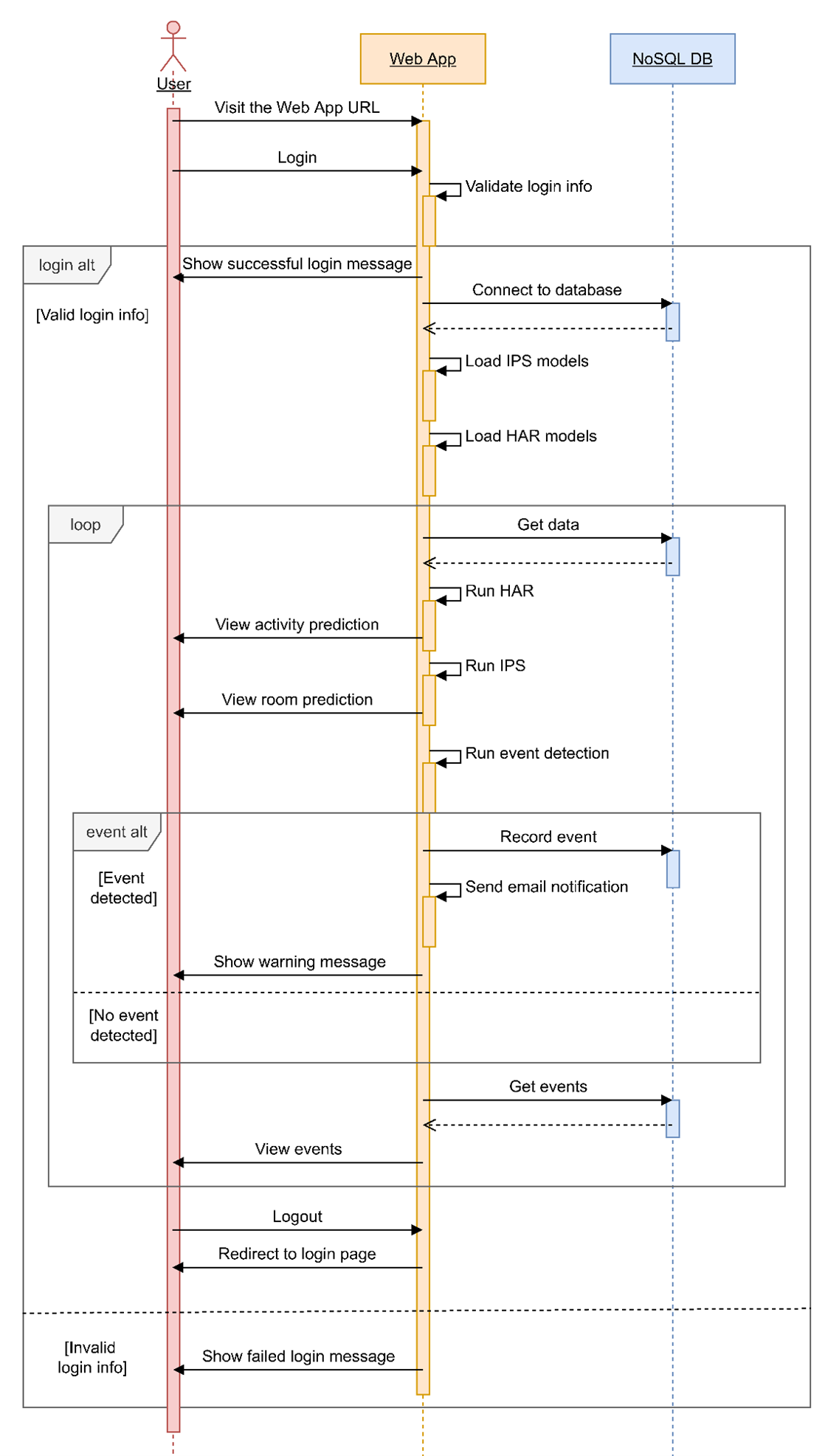 Sequence diagram of the integrated HAR-IPS system
Sequence diagram of the integrated HAR-IPS system
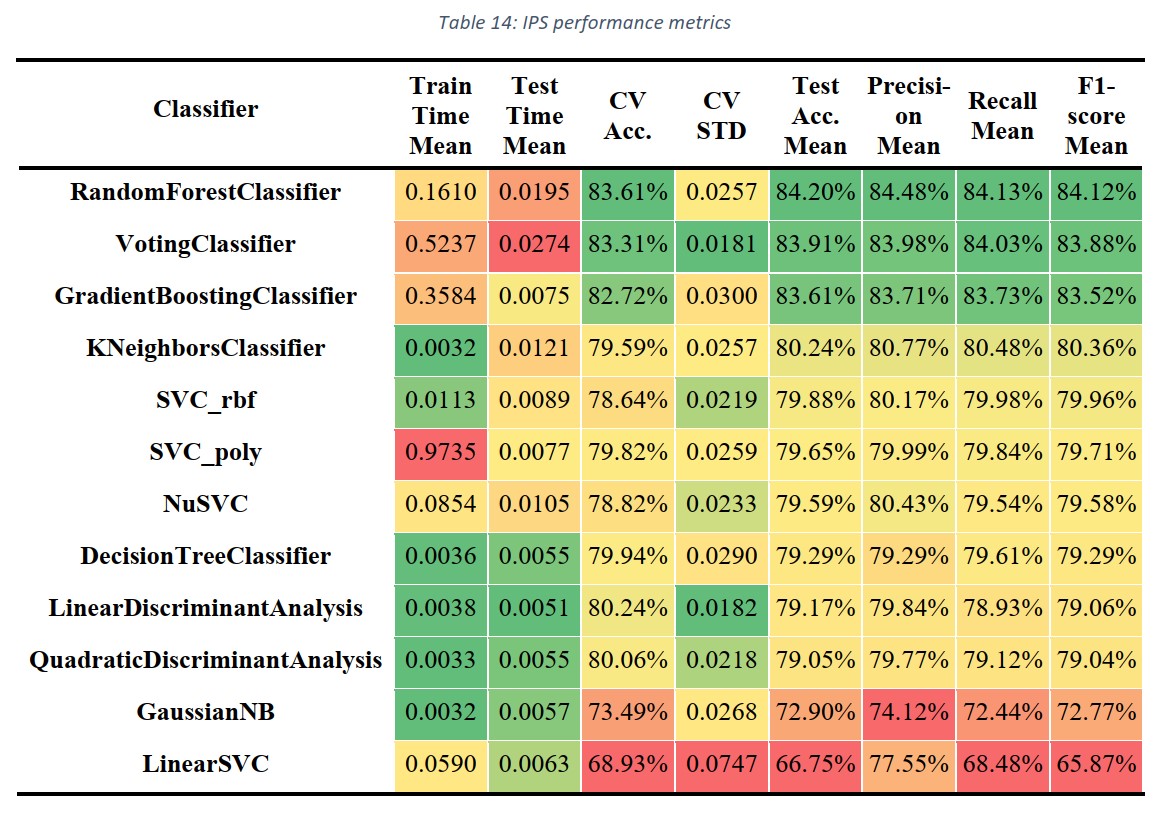
IPS models' performance metrics
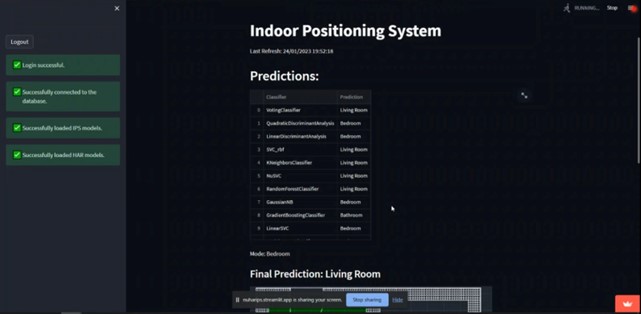
Web app dashboard showing the prediction of each IPS model
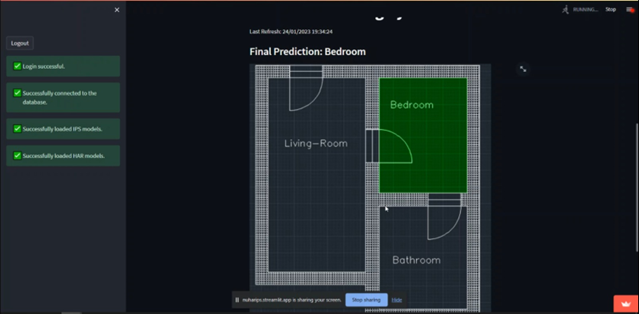
Web app dashboard showing the patient's location inside the designated space


Event detection and warning message on the Web app (above) with an email alert notification (below)
Data Visualization
COVID-19 Dashboard using BigQuery and Looker Studio
Key Skills: Machine Learning · Feature Engineering · Scikit-Learn · Data Science · Data Analysis · Artificial Intelligence (AI) · Communication Protocols · Signal Processing · Internet of Things (IoT) · Python (Programming Language) · NumPy · Pandas (Software) · Matplotlib · Data Classification · Flask · Web Applications · Firebase · Cloud Firestore · Google Cloud Platform (GCP) · Cross-validation · Agile Methodology
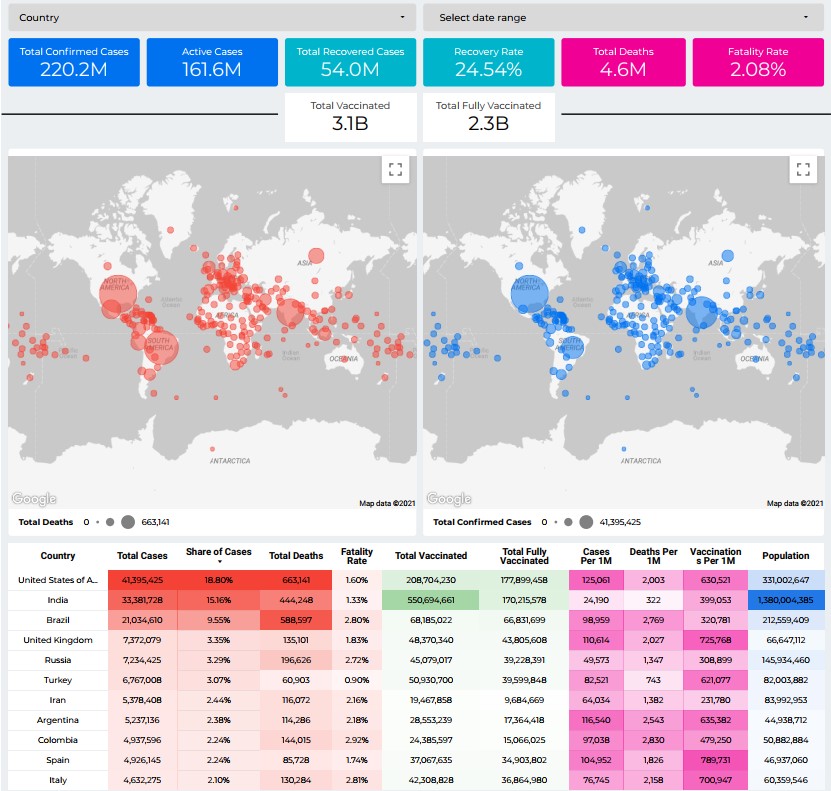
Tasks:
- Extracted valuable data from the COVID-19 Open Data dataset using Google BigQuery.
- Analyzed the extracted data to identify key metrics and trends relevant to the COVID-19 pandemic, such as total confirmed cases, total deaths, fatality rates, vaccination rates, etc.
- Designed and built an interactive dashboard from scratch using Google Data Studio.
- Integrated various visualizations, including maps, tables, charts, and graphs, to effectively communicate insights and trends.
- Implemented user-friendly features such as dropdown menus for selecting specific countries and date ranges to enable dynamic data exploration.
- Ensured data accuracy and reliability by validating the data sources and updating the dashboard regularly with the latest available data.
- Tested the dashboard functionality to ensure smooth interaction and proper display of information across different devices and platforms.
- Provided documentation to enable users to understand how to interpret and utilize the dashboard effectively for decision-making and analysis.
Electronics Megastore Chain Comprehensive Business Intelligence Report
Key Skills: Business Intelligence · Power BI · Data Analysis · Statistical Analysis · Extracting Actionable Insights · Excel · Data Visualization · Data Analysis Expressions (DAX) · Time Series Analysis · Market Research · Customer Segmentation · Profitability Analysis · Brand Performance · Regional and Geographic Analysis · KPIs · Churn Analysis · Strategic Planning
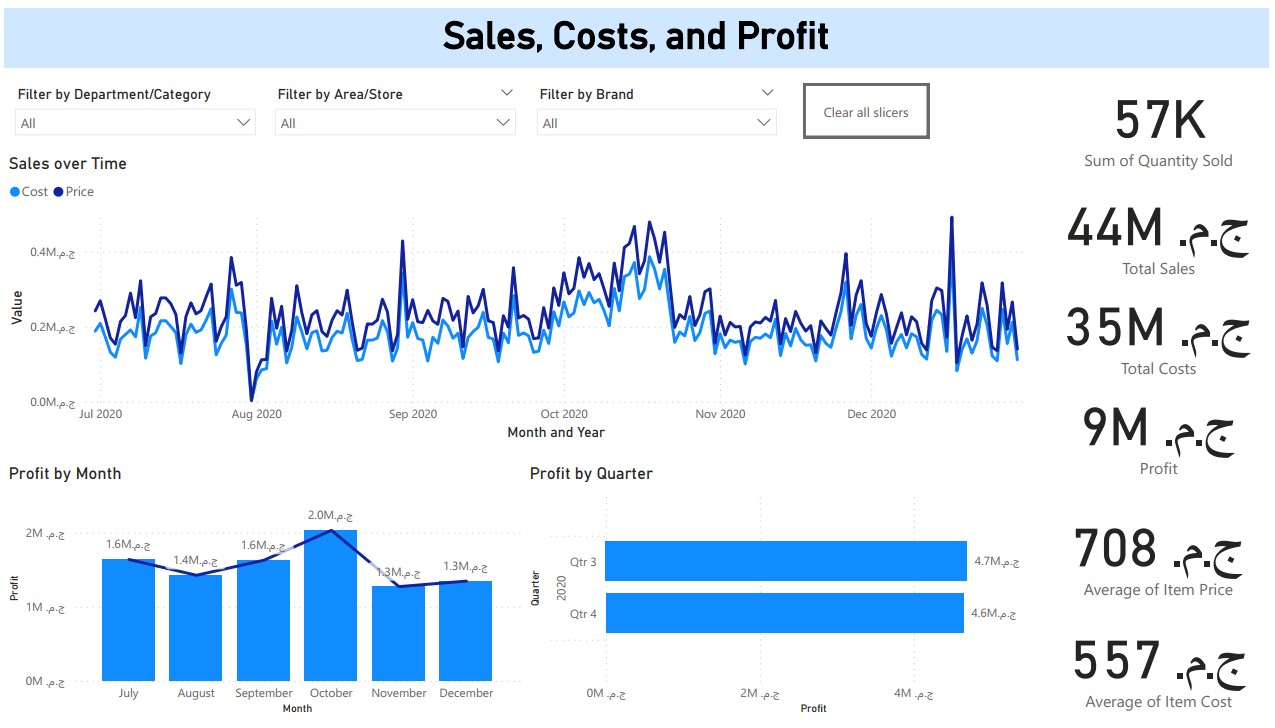
Tasks:
- Extracted and prepared sales, profit, and customer data for the specified timeframe. This included cleaning and organizing the data to ensure accuracy and consistency for analysis.
- Developed actionable recommendations based on the analysis for various aspects of the business, including strategies to address identified issues and improve overall performance.
- Conducted a deep dive into various business areas of XYZ Trade:
- Profitability: Analyzed trends, seasonality, and identified reasons behind a profit decline from Q3 to Q4.
- Sales Performance: Investigated overall sales trends, including a significant drop observed on July 31st.
- Product and Brand Performance: Evaluated the performance of different product categories and brands, including top sellers, average product prices, and underperforming brands.
- Regional Performance: Analyzed sales and profitability across different regions, identifying top performing areas and potential reasons for variations.
- Store Performance: Compared the performance of individual stores, pinpointing top performers, underperformers, and cashier effectiveness.
- Customer Returns: Investigated return trends, reasons for returns, and identified areas for improvement.
- Buyer and Brand Contributions: Assessed the contribution of key buyers and brands to overall profitability.
- Product Profitability: Identified high and low profitability products for strategic decision-making.
Courses and Certificates
Advanced Data Analysis Nanodegree - Udacity (Credential URL)
Professional Data Analysis Nanodegree - Udacity (Credential URL)
AI Programming with Python Nanodegree - Udacity (Credential URL)
Neural Networks and Deep Learning - DeepLearning.AI via Coursera (Credential URL)
Introduction to Machine Learning - Duke University via Coursera (Credential URL)
Machine Learning with Python - IBM via Coursera (Credential URL)
Machine Learning Developer by Google - Information Technology Institute (ITI) (Credential URL)
Managing Machine Learning Projects with Google Cloud - Google Cloud via Coursera (Credential URL)
Introduction to Cloud Identity - Google Cloud via Coursera (Credential URL)
Machine Learning Foundations: A Case Study Approach - University of Washington via Coursera (Credential URL)
Machine Learning Fundamentals with Python - DataCamp (Credential URL)
Getting Started with AWS Machine Learning - Amazon Web Services via Coursera (Credential URL)
Data Science Mathematical Skills - Duke University via Coursera (Credential URL)
Digital Technology Data Analytics Program - GE via Forage (Credential URL)
Introduction to IoT - Cisco (Credential URL)
Angular Development Cross-Skilling - Udacity (Credential URL)
Software Engineering Virtual Experience - JPMorgan Chase & Co. via Forage (Credential URL)
Python Fundamentals - DataCamp (Credential URL)
Python for Machine Learning - Great Learning (Credential URL)
Introduction to Creative AI - University of the Arts London via FutureLearn (Credential URL)
Fundamentals of Digital Marketing - Google (Credential URL)
Learn to Code for the Web - University of Leeds via FutureLearn (Credential URL)




